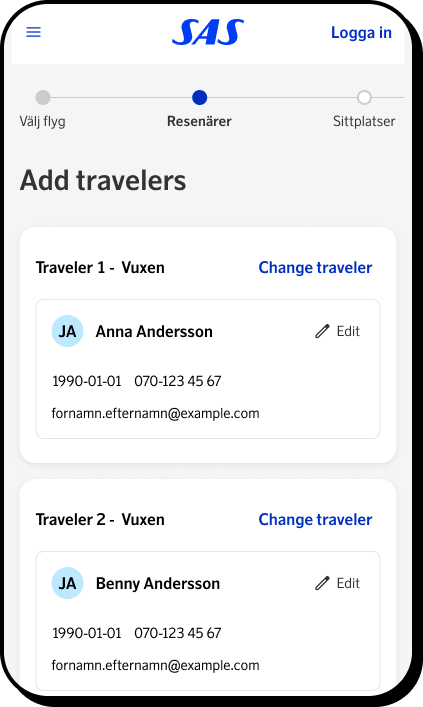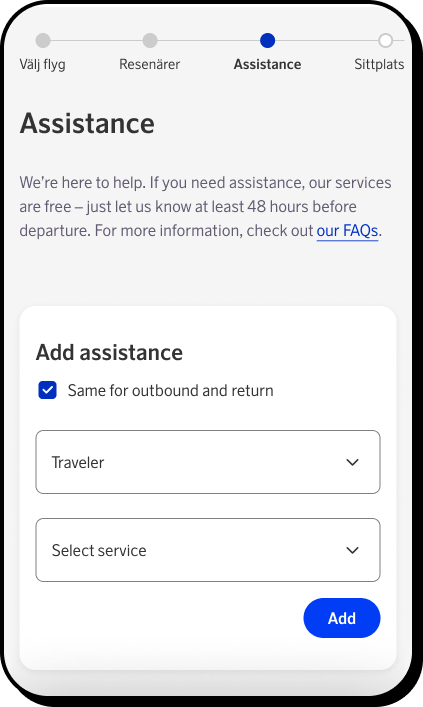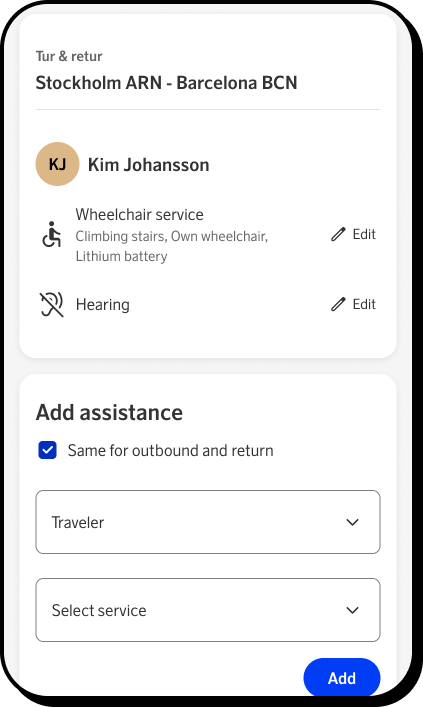
Scandinavian Airlines
Booking flow redesign
As part of the Digital & IT design team at SAS, I contributed to the complete redesign of the airline’s booking flow — the heart of its digital business. The challenge was to modernize the experience, improve conversion, and introduce personalization while keeping the process simple and reliable for millions of travelers.
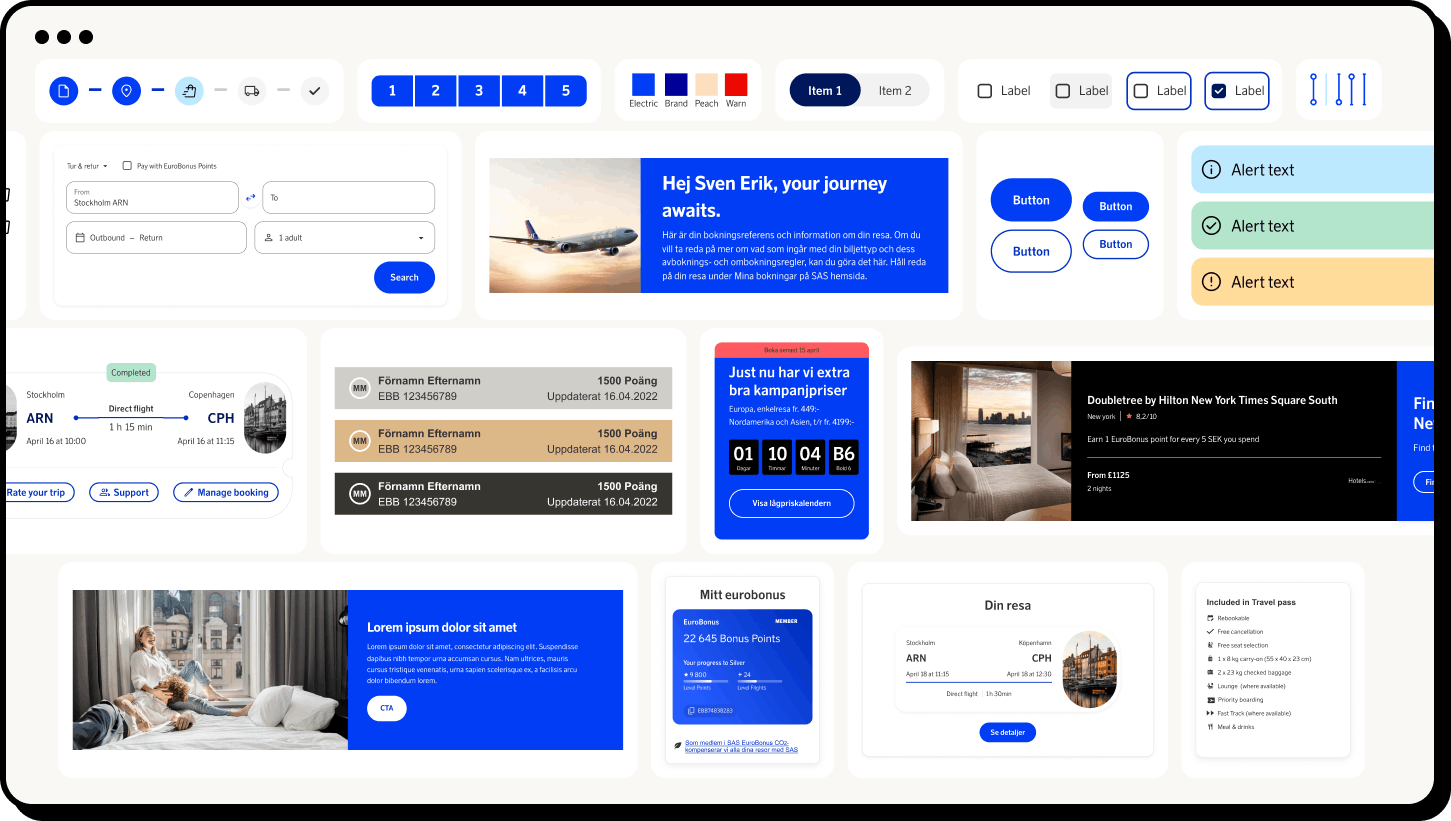
About the project
01
The booking flow is the core revenue engine of SAS — where over 60 % of all digital transactions occur. Even minor usability issues can have a major business impact.
Working within the Digital & IT department, our goal was to design a new flow from the ground up as part of the broader website relaunch. I was one of four designers responsible for redefining the end-to-end booking experience: taking the best aspects of the legacy system, introducing flexible new features, and ensuring a fast, seamless structure for customers across devices.

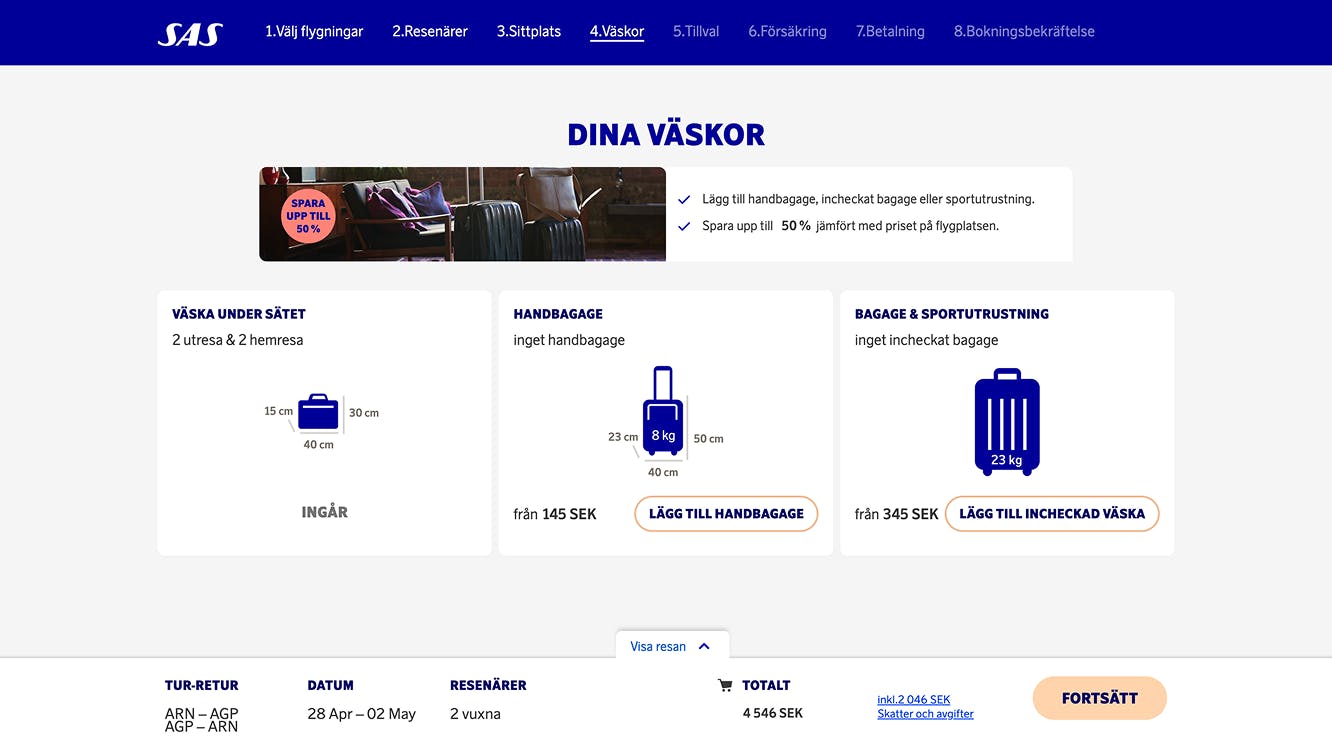
Design process
02
We started by mapping the existing journey, benchmarking against competitors, and identifying friction points in each step of the current flow.
Through workshops, user testing, and stakeholder sessions, we gathered insights that helped us define new user scenarios and requirements. These informed early wireframes, prototypes, and a modular architecture that could adapt to both app and web.

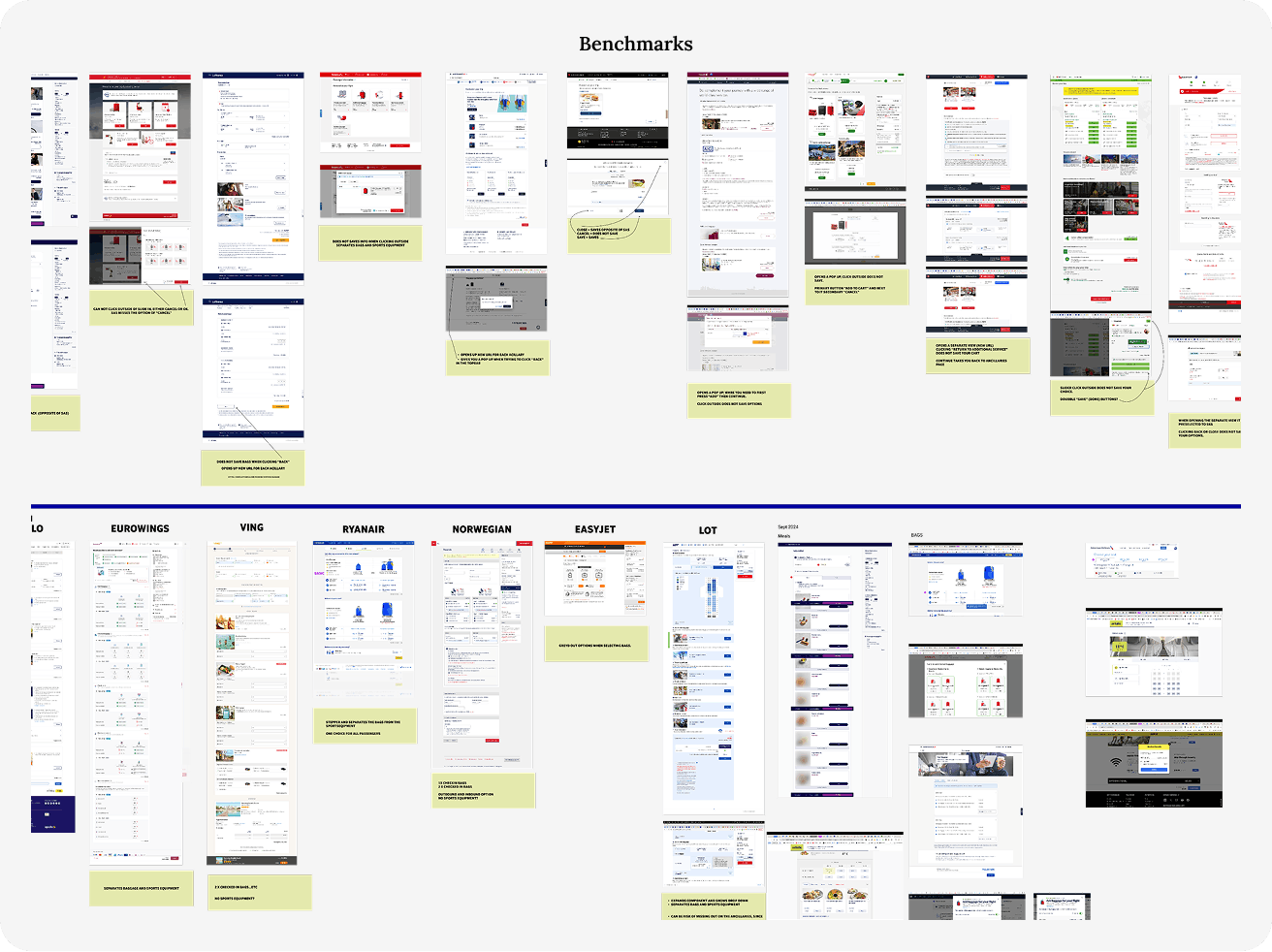
Challenge
The Problem
The previous system was highly fragmented and inconsistent across platforms. Managing multiple fare types, loyalty features, and ancillary services (like seat selection or baggage) made the experience confusing for users.
Our challenge was to simplify this complexity — creating a unified, predictable flow that still allowed for flexibility, upsell opportunities, and personalization
The Solution
Users prefer the app over the website, as it offers a simpler and more structured way to book and manage flights, with personalised features that make traveling easy and upsell ancillaries easier for stakeholders.
Clear.
Data based.
Personalised.

Blueprint Design System
03
In parallel with the booking-flow redesign, our team developed the SAS Blueprint Design System — a shared library of components, tokens, and patterns built to ensure consistency across all digital touchpoints.
I contributed to defining core UI components, interactive states, and documentation standards. The system now enables faster prototyping and higher design quality while keeping accessibility and brand expression aligned.

Navigation and Cart
04
One of the key improvements was introducing a unified navigation pattern and persistent cart across all booking steps.
This allows travelers to review and adjust their journey without losing context or starting over — a simple change that significantly reduced friction and improved completion rates in testing.
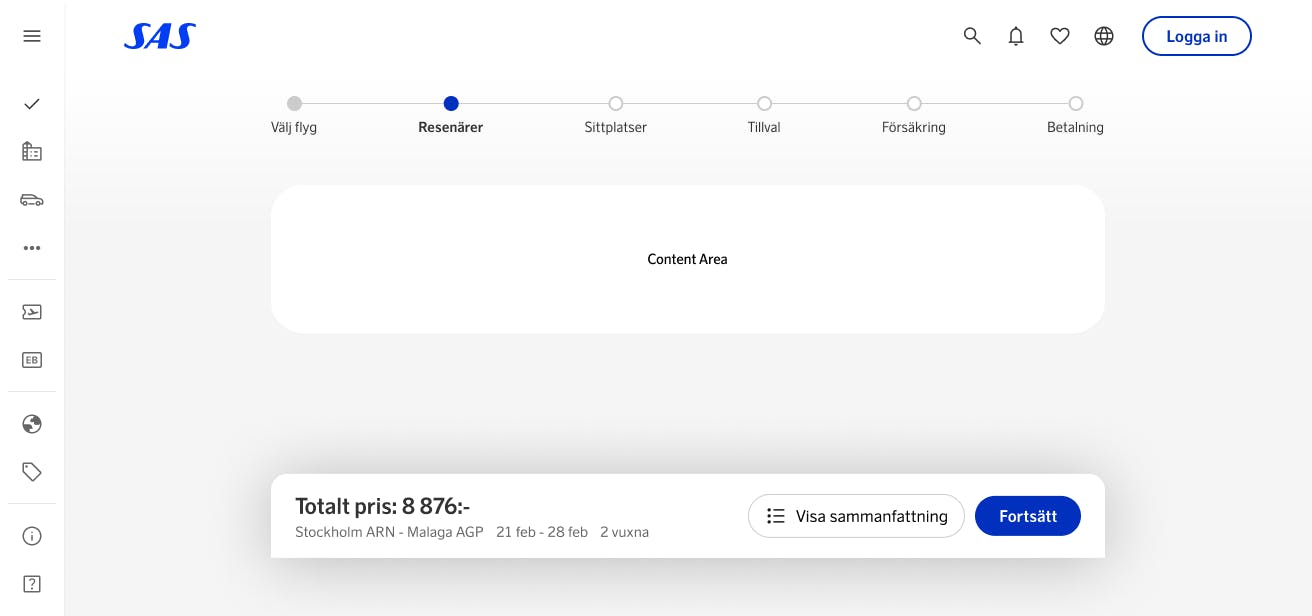
Choose your journey
05
The new booking flow introduces smarter defaults, clearer hierarchy, and dynamic personalization.
Travelers can now select, compare, and customize flights more intuitively — with real-time pricing and contextual guidance that adapts to their choices.
Travellers and accessibility
06
Accessibility and inclusivity were central to the redesign. We ensured that all core interactions — from passenger selection to payment — meet WCAG 2.1 AA standards.
Simplified input fields, high-contrast color modes, and better screen-reader support make the experience easier for everyone, regardless of device or ability.
